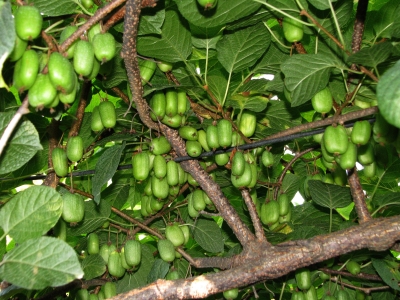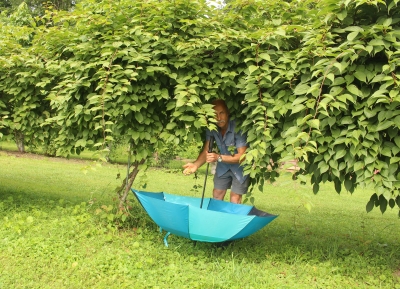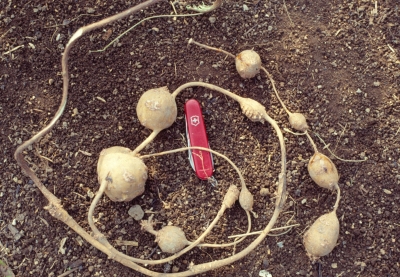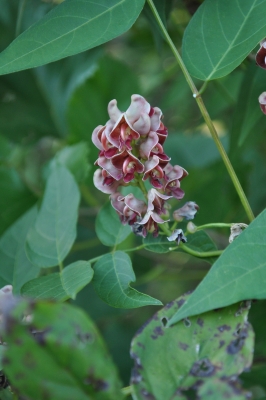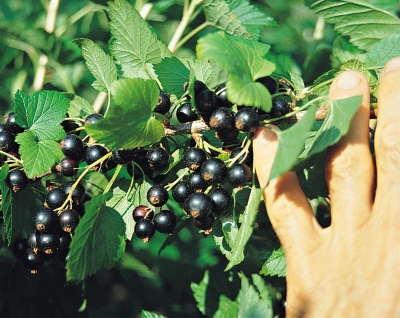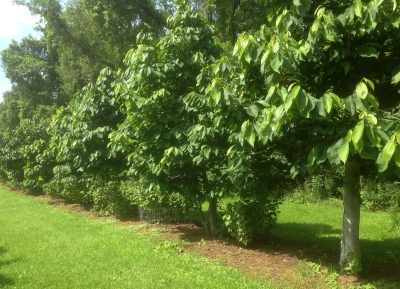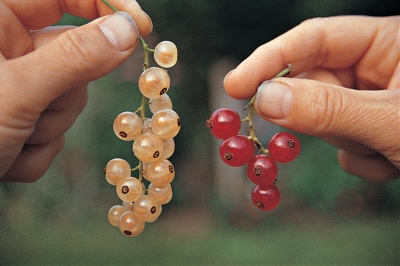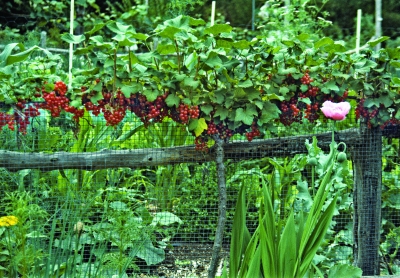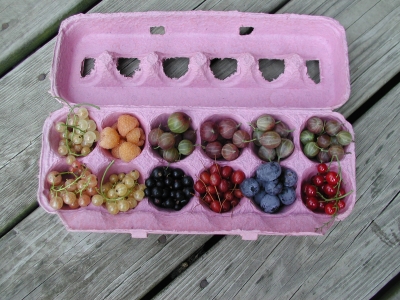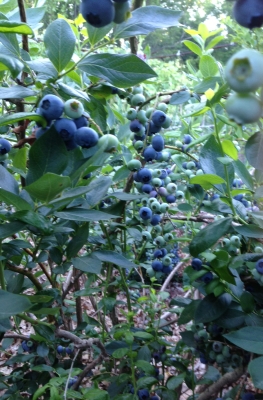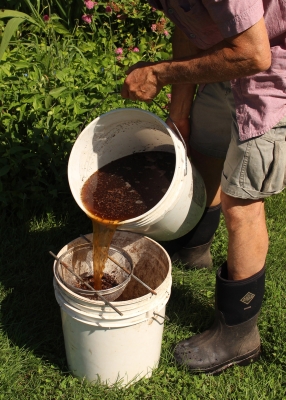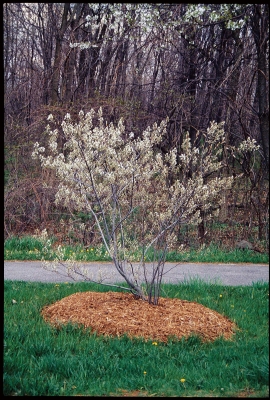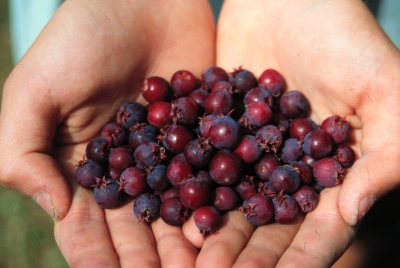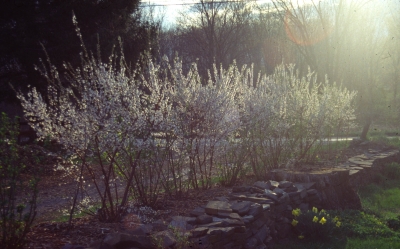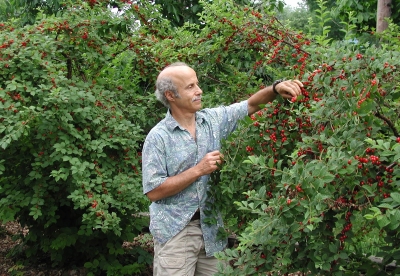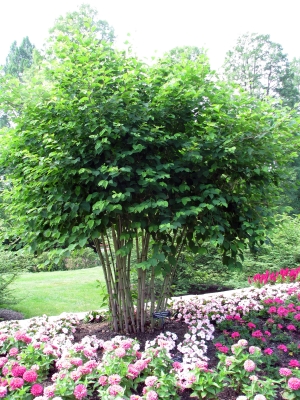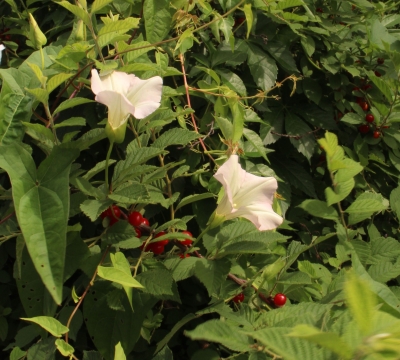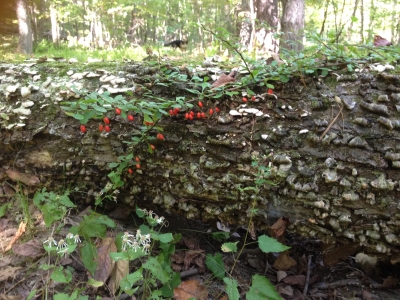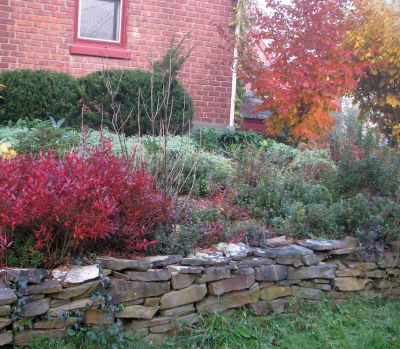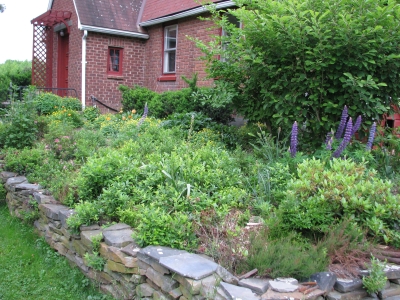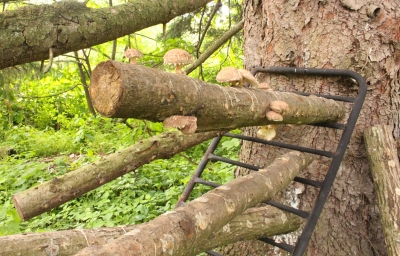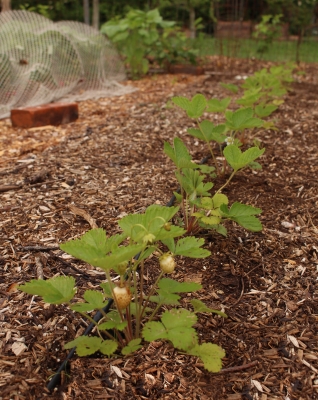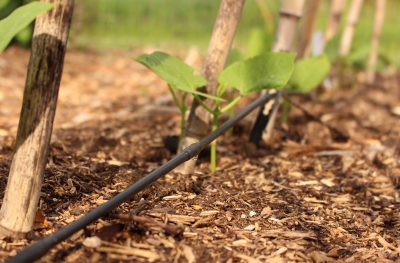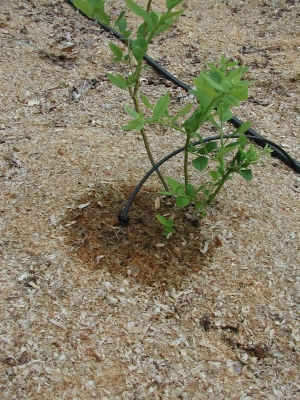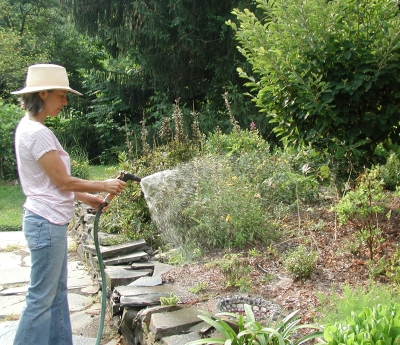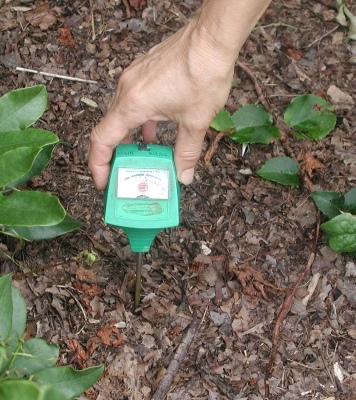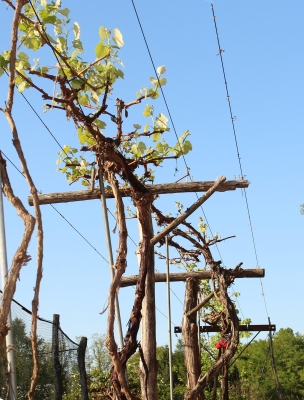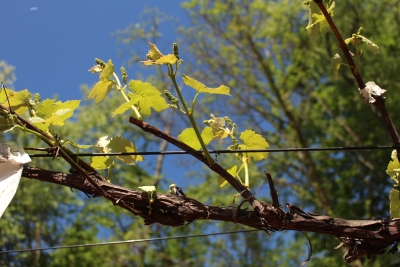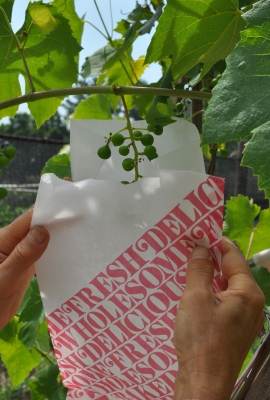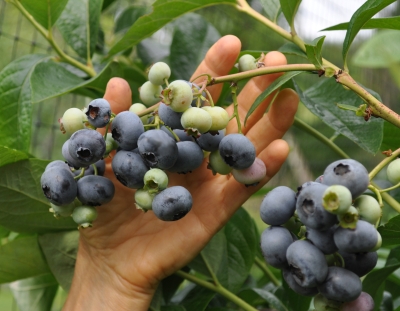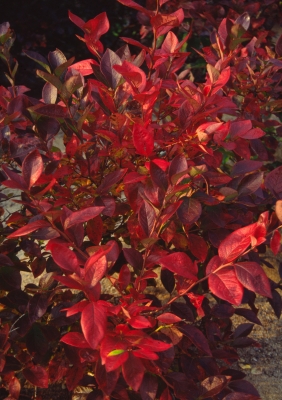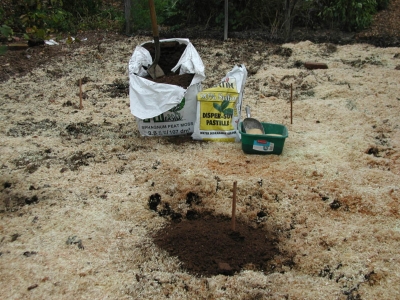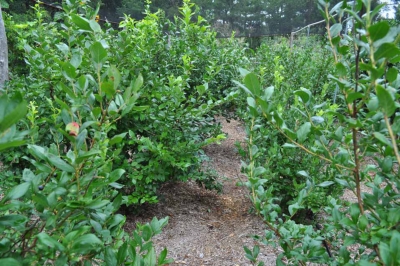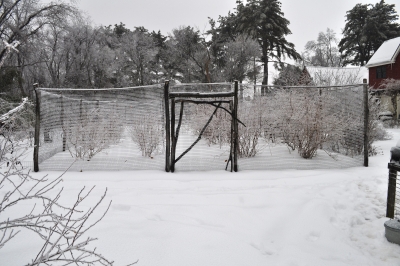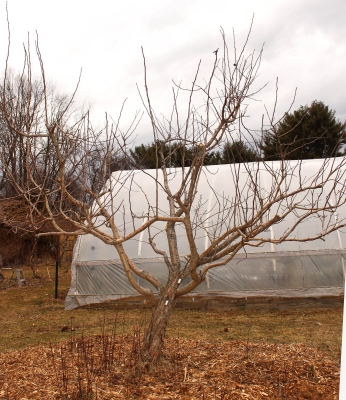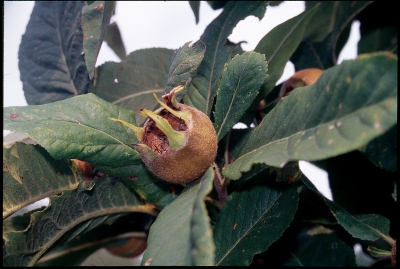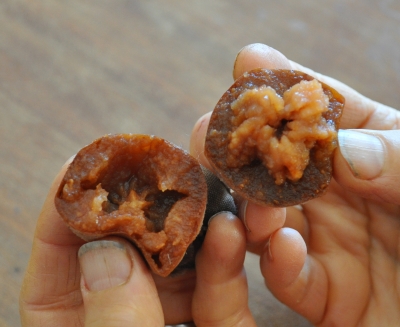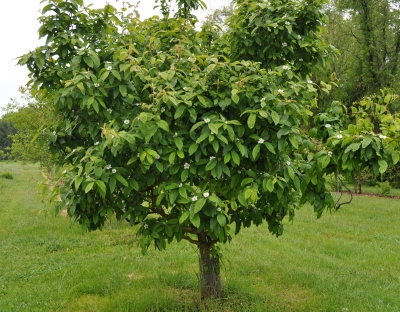DUCKS WORKING, BUT NOT ON GROUNDNUTS
THE DUCKS CALL THIS “WORK”?
My ducks told me that the hardy kiwifruits were ripe. No, they’re not trained to give a specialized “hardy kiwifruit ripe” quack. Instead, they’ve taken to hanging out beneath the vines to scoop up dropped fruits. No training needed for this.
Those dropped fruits are one reason that these vines — Actinidia kolomikta — are not as popular for fruit as another species, Actinidia arguta. Ripening, and dropping, is fast in the heat of July. Arguta kiwis ripen in late summer and early fall, and possibly cling to the vines more reliably then because cooler weather slows ripening.
Not that either of the fruits are well known. Both are cousins to the fuzzy kiwis (A. deliciosa), ubiquitous in supermarkets. Both hardy kiwis differ from the fuzzies in being cold-hardy (only to 0°F for the fuzzy as compared to minus 30°F for A. arguta and to minus 40°F for A. kolomikta), grape-sized, with smooth, edible skins, and better flavor than the fuzzies.
In addition to ripening earlier and dropping more readily, kolomikta kiwis differ from arguta kiwis in coming into bearing much sooner, often in their second year, and growing much less rampantly. Argutas are hard vines to tame. Ornamental vines of both species gracing historic gardens for decades before their fruits were noticed and appreciated is testimonial to their beauty. Kolomikta’s leaves are brushed silvery white with random pink blushes.
Back to harvest. Harvest from the ground is unfeasible because the green fruits are too hard to find among the blades of green grass. And unhealthy because of all the processed kiwifruits — poop — the ducks eject at their far end as they gobble up the berries. A ground cloth to catch the berries would become similarly soiled unless I went to the trouble of spreading it, shaking the vines, then gathering up the cloth after gathering up the fruits.
Instead, I’ve taken to walking beneath the vines with a large umbrella, upturned, and shaking portions of the vines right above the umbrella. Ripe fruit drop into the waiting “funnel.” Sure, many fruits are lost, but the vine bears more than enough to share with the ducks, who can enjoy the missed fruits.
RIPENING OFF THE VINE, HOW CONVENIENT
Like apples, bananas, and avocados, kiwifruits of all stripes are climacteric fruits. Instead of steady ripening, climacteric fruits, just before they are ready to eat, go through a burst of ripening with sugar levels and carbon dioxide production all of a sudden rapidly increasing. Fruit quality begins to decline right after this burst.
Ethylene, a simple gas that is also a naturally occurring plant hormone, also spikes during this burst. And ethylene further accelerates ripening, which increases ethylene production even more, which increases ripening even more, and . . . Disease, wounds, and decay also stimulate ethylene production, which is why “one rotten apple spoils the barrel.”
If picked when sufficiently mature, but not dead ripe, kiwifruits store well for a few weeks. They’ll ripen during storage, slower under refrigeration, faster at room temperature. From experience, I know that “sufficiently mature” for kiwis is when the first fruits start ripening. So, in addition to my umbrella harvesting, I’m harvesting a bunch of the unripe fruits and refrigerating them to extend their season. Don’t worry; there’ll still be plenty for the ducks.
SOMETHING FOR YOU PERMACULTURALISTS
Every time I walk back to the kiwi vines, I pass a perennial flower bed. Or, at least, what was supposed to be a flower bed and now is bordering on half flowers and half weeds. The major two weeds, I admit, are my own doing.
The first of these weeds is dayflower, which arrived here with some bee balm plants from a friend. It’s actually a pretty plant with small, blue flowers, and it’s easy and satisfying to pull out. To a point.
The other weed, groundnut, was a deliberate planting, by me, about 20 years ago. It seemed interesting, bearing edible, golf-ball-sized tubers that string along underground like beads. Groundnut reputedly is the food that got the pilgrim’s through their first winter. Occasionally the plant, a vine, flowers, bearing chains of pale chocolate-colored blossoms. Do I remember them smelling like chocolate also? Perhaps. With all the other vegetation in the bed, the plants haven’t flowered in a long time.
The problem is that those chains of tubers spread to make more chains of tubers which, in turn, do likewise, ad infinitum. The vines now creep over almost every plant in that bed but rarely get enough space to themselves to make tubers anymore. No matter. They didn’t taste that good anyway.
I wasn’t as foolish as might seem planting groundnut in that flower bed. Twenty years ago that flower bed wasn’t a flower bed, but just a place for interesting plants in my then small garden.

